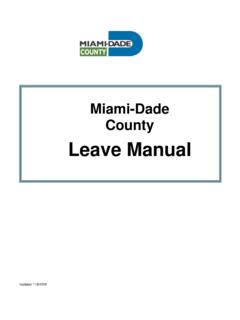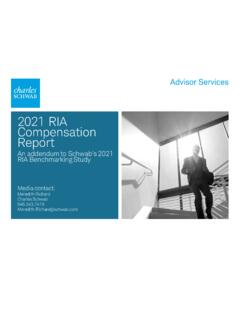Transcription of Private Equity Practice 2021 North American Private Equity ...
1 2021 North American Private Equity Investment Professional compensation SurveyPrivate Equity PracticeDocument title2 Heidrick & Struggles3 ContentsA message from the authors 4 Methodology5 Executive summary 6 State of the Private Equity market 7 Hiring trends 7 compensation trends 8 State of investment professional compensation 12 Non-cash compensation 37 Comparisons of compensation by regions, education, and experience 40A message from the authors2021 North American Private Equity Investment Professional compensation Survey4 Welcome to our 2021 North American Private Equity Investment Professional compensation Survey. Together with our survey of Private Equity operating professionals (coming later this year), this report provides a comprehensive picture of the compensation that North American Private Equity executives are currently receiving. For this report, Heidrick & Struggles compiled compensation data from a survey of 1011 investment professionals in North America.
2 This year we added to the range of topics on compensation and executives backgrounds we explore and looked at compensation for women and people of color. We hope you enjoy reading the survey, which remains the only one of its kind. As always, suggestions are welcome, so please feel free to contact us or your Heidrick & Struggles representative with questions and warmest regards,On confidentialityThe North America Private Equity compensation survey, 2021, was been conducted on an anonymous basis for individuals and their employers, and Heidrick & Struggles has removed the data relating to identity from reported compensation authors wish to thank Mohd Arsalan and Daria Sklyarova for their contributions to this Rubinetti PrincipalPrivate Equity GoldsteinRegional Managing partner , AmericasPrivate Equity & Struggles5 A note on titlesWhile title structures vary according to firm, we have divided respondents into five groups based on level and partner Most senior level at the firm.
3 Typically, although not always, one of the directorProven investment track record. Experienced deal maker and board professional with early experience originating and leading their own investments. Accomplished executor with experience on board of directors. Leads and manages deals for the firm. Personal track record not yet presidentDeal quarterback. Responsible for high-level company and business plan analysis. Leads due diligence and manages service providers and financing. Develops proprietary network of contacts for due diligence and deal-flow generation. Works closely with the portfolio and might have board exposure or a board associateResponsible for analyzing companies and business plans, conducting due diligence, and working with service providers under the direction of the vice an online survey, we asked participants to provide compensation data from 2019, 2020, and 2021.
4 All data collected is self-reported by Private Equity investment professionals and has been aggregated to evaluate trends in compensation packages, including base salary, bonus, and carried interest plans (carry).Responses from 1011 participants are included in the survey each compensation table, we report the lowest response, lower quartile (25th percentile), mean, upper quartile (75th percentile), and highest response. Please note that the mean can be influenced by particularly high or low data points, especially in small sample sizes. Many firms that use compensation surveys set their compensation targets around or above the upper quartile (75th percentile).Carried interest is calculated using carry dollars at work the expected return on total carry participation across all vehicles, based on achieving a net 2x return (above hurdle and after fees) in a vehicle charging a 20% performance fee.
5 For example, 7 points (700 bps) of carry (out of a possible 100) in a $500 million fund with 20% carry would result in $7 million of carry dollars at work (500 X X = 7).All compensation figures in tables and charts are reported in USD thousands unless otherwise North American Private Equity Investment Professional compensation Survey6 Executive summaryPrivate Equity : The big picture After being upended by the COVID-19 pandemic, the US Private Equity market finished 2020 strong. Deals and total value were off their 2019 levels, but above their 2018 levels. Exit activity dipped and then rebounded, although exit timeframes were extended. Fundraising slipped because of the pandemic, but the impact was lessened by the fact that PE had begun 2020 with very high levels of dry powder: at the end of Q1 2020, there was more than $550 billion that was less than two years old. There are multiple signs that PE activity is returning to growth in 2021.
6 GPs are sensing opportunity in retail and hospitality, there were some large carve-outs and take- Private transactions announced in Q1, and Q1 exit activity was 7 Investment professionals: compensation trends Despite many people working in remote, low-tax locations, compensation has not decreased: slightly more than half of all respondents ( ) reported an increase in base last year, and 54% expect an increase this year; with most (76%) seeing increases of 20% or less. Bonuses remained strong, although fewer respondents reported an increase last year: 67% saw an increase in 2020, down from 77% for 2019. Growing demand for female and diverse candidates could be a pathway toward pay 12Co-investment eligibility and rights As in past years, almost all investment professionals have co-investment eligibility. Co-investment was fund-based for 56% or more of respondents at each level in 2020, about the same as 2019.
7 A smaller percentage, generally 10% to 16% for senior-level professionals, is deal-based. The percentage of deal-based co-investment eligibility is highest (40%) among associates/senior 39 Investment professionals: Hiring trends After a COVID-19 slowdown, hiring returned to its 2019 levels by the end of 2020, and momentum is continuing in 2021. The shift to remote work has opened opportunities in new locations. While there continues to be demand for managing directors and partners, the hiring focus has shifted to vice presidents and principals, likely to fill out teams after an earlier surge in more senior hires. Demand for operating partners has also been very active. Firms must move quickly with the right offer or lose out, particularly with diverse 7 Carried interest provisions Almost all investment professionals at more senior levels reported receiving carry, but it remains uncommon at the associate/senior associate level.
8 When carry vests on a fund basis, it takes an average of six years to fully vest. When carry vests on a deal-by-deal basis, it takes an average of four 37 This year s survey includes a review of 2020 and year-to-date 2021 activity in North American Private Equity (PE), our thoughts on the major hiring trends for investment professionals, and an exploration of the composition of 2020 compensation packages for investment professionals, including analysis by gender and & Struggles7 State of the Private Equity marketAfter a promising start to 2020, the early months of the COVID-19 pandemic upended the global economy and PE dealmaking along with it. Yet, by the end of the year, sponsors were actively putting capital to work again in minority transactions, public companies, and add-on acquisitions often in the healthcare and technology sectors that were the focus of so much other attention because of the pandemic.
9 Growth Equity reached the highest deal value on the dust settled, Pitchbook counted 5,309 deals closed for a combined value of $ billion, both off their 2019 This was the first decline in both deal-making value and count since 2009, but both remained above the 2017 level. Exit activity dipped and then rebounded, although exit timeframes were extended. Fundraising also slipped because of the pandemic, but the impact was lessened by the fact that PE had begun 2020 with very high levels of dry powder: at the end of Q1 2020, there was more than $550 billion that was less than two years old. There are multiple signs that PE activity is returning to growth in 2021: GPs are sensing opportunity in retail and hospitality. There were some large carve-outs and take- Private transactions announced in Q1. Several PE firms have launched a special purpose acquisition company (SPAC). PE firms have pursued Private investment in public Equity (PIPE) deals.
10 Q1 exit activity has been robust. Hiring has also been robust. 1 2020 Annual US PE Breakdown, Pitchbook, January 11, 2021, trendsDespite fears of a very slow market because of COVID-19, hiring returned to its 2019 levels by the end of 2020 and momentum is continuing in Equity firms have been adding staff at all levels, but we did observe a shift in 2020: while there was substantial hiring for investment partners and managing directors two years ago, the focus shifted to vice presidents and principals. Demand for operating partners has also been very active and it is not improbable that, at some point, the numbers of operating partners will be equal to those of investment seeking to hire leading candidates must move quickly on their prospects with the right offer or risk losing them to competitors. Top candidates consistently have at least two other offers in front of them, and sometimes more and the competition is even fiercer for diverse candidates.





